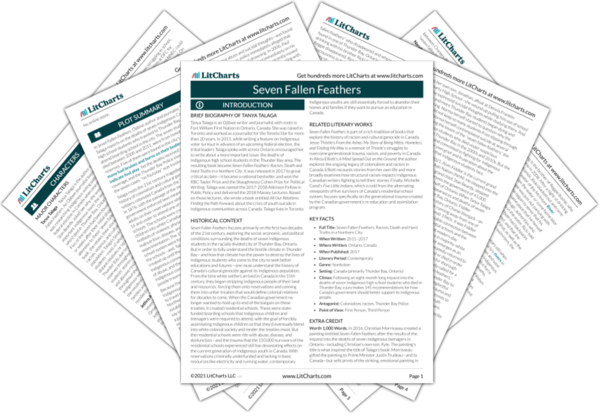First Nations Quotes in Seven Fallen Feathers
And yet still the inequities rage. Northern First Nations families are faced with the horrific choice of either sending their children to high school in a community that cannot guarantee their safety, or keeping them at home and hoping distance education will be enough. Families are still being told—more than twenty years after the last residential school was shut down—that they must surrender their children for them to gain an education. Handing over the reins to Indigenous education authorities such as the NNEC without giving them the proper funding tools is another form of colonial control and racism.

Unlock explanations and citation info for this and every other Seven Fallen Feathers quote.
Plus so much more...
Get LitCharts A+After the attack on Darryl Kakekayash, Alvin and Julian saw a clear and disturbing pattern. They could not help but wonder if First Nations kids were being targeted and murdered. It was extremely rare to hear of Indigenous kids drowning on their reserves. Most First Nations people were born and raised on the water. Equally perplexing was how quickly the Thunder Bay Police wrote off investigations into the deaths. For Jethro, Curran, Reggie, and Kyle, police had issued press releases that came to the same conclusion: foul play was not suspected. Each of the deaths was classified as accidental: death by drinking too much and then drowning. To Thunder Bay Police, no one was readily responsible for the deaths of the students.












